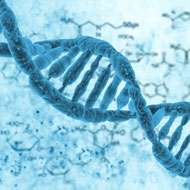Scientists use 'DNA clock' to estimate lifespan

Researchers found there was a link between early death and having a greater biological age than actual age.
A team of international scientists has identified a "DNA clock" that offers clues about how long a person will live.
During a person's life, their DNA undergoes chemical changes which can help scientists predict their age. Led by the University of Edinburgh, researchers compared individuals' actual ages with their predicted biological clock age.
According to the results, which have been published in Genome Biology, those people with a greater biological age than their actual age were more likely to die earlier than individuals whose biological and actual ages matched.
Scientists from Edinburgh, the US and Australia, carried out four independent studies on nearly 5,000 older people, up to a period of 14 years. Each individual's biological age was measured at the start of the study and followed up throughout using a blood sample and studying a chemical modification to DNA, known as methylation.
Researchers found there was a link between early death and having a greater biological age than actual age - regardless of other factors such as smoking, diabetes and cardiovascular disease.
Commenting on the findings, lead researcher Professor Ian Deary: "It is exciting as it has identified a novel indicator of ageing, which improves the prediction of lifespan over and above the contribution of factors such as smoking, diabetes, and cardiovascular disease."
Dr Riccardo Marioni, also from the University of Edinburgh, added: "The same results in four studies indicated a link between the biological clock and deaths from all causes. At present, it is not clear what lifestyle or genetic factors influence a person’s biological age. We have several follow-up projects planned to investigate this in detail."



 The RCVS has announced a new version of its 1CPD mobile app, with enhanced features for veterinary surgeons and veterinary nurses to record their continuing professional development.
The RCVS has announced a new version of its 1CPD mobile app, with enhanced features for veterinary surgeons and veterinary nurses to record their continuing professional development.